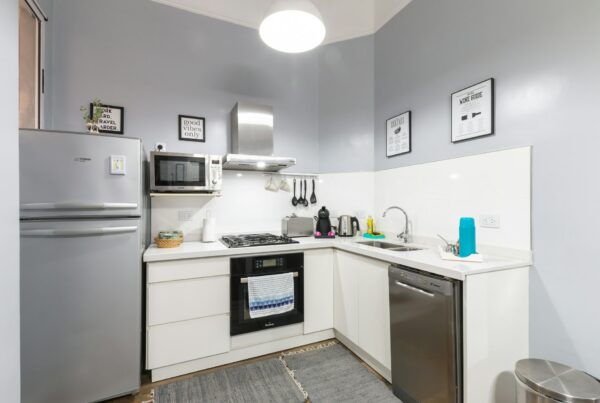Last Updated on February 2, 2024
Cleaning refers to the practice of removing unwanted substances from surfaces and objects for aesthetic, hygienic, functional or environmental purposes. Cleaning may be performed either by professionals or household members themselves.
At the outset of cleaning, dirt, dust and debris must be physically eliminated by means of sweeping, vacuuming or mopping.
The Stages of Cleaning
Cleaning is an integral component of daily life. From washing our hands after eating to wiping down high-touch surfaces in an office setting, everyone must conduct some form of cleaning at least once each day.
At the outset of any cleaning task, the primary step should be removing visible contaminants such as food debris or debris that has fallen onto surfaces such as food spillages and smoke, or dust particles that cannot be picked up with our hands.
To do so effectively and efficiently, this involves picking up and disposing of loose contaminants while brushing or sweeping away larger particles that cannot be easily collected by hand.
At this stage, the purpose of cleaning is to make subsequent steps of disinfecting easier and more effective – such as using powerful chemical products designed to kill harmful microorganisms. You can visit this site to learn more about these microorganisms.
Enhancing Disinfection Efficiency
By eliminating organic matter, salts, and visible soils, disinfection will become significantly more efficient as it will be better conducive to germicidal inactivation. Therefore, cleaning must take place prior to any form of sanitation or disinfection as otherwise it will interfere with this process and diminish its efficacy.
Cleaning can reduce microorganism counts on surfaces by 50-90% while also improving chemical disinfectant efficacy.
Sanitization and Storage of Cleaning Materials
Once debris is cleared away, the next stage of cleaning should involve sanitization – either spraying or wiping surfaces with disinfectant wipes to reduce germ counts on surfaces and particularly useful when it comes to shared spaces where cross contamination could happen.
Keep in mind that all materials should be stored correctly to avoid contamination, thus helping prevent the spread of norovirus or salmonella and also stopping contaminated cloths, mops or tools being used on inappropriate surfaces.
Rinsing: An Integral Step
Rinsing, an integral step in any cleaning process, involves washing away any grease, dirt and debris loosened during previous steps. For surfaces it is recommended to use wipes or paper towels; while for floors and windows use a mop or squeegee. In this stage any detergent residue from previous steps will also be eliminated by this stage of rinsing.
Once all visible dirt and debris have been cleared from a surface, it’s time to disinfect it.
Disinfection: Eliminating Harmful Microorganisms
Disinfection is an integral component of any thorough cleaning procedure and the only method capable of eliminating harmful bacteria and microorganisms from an environment. Chemical disinfectants designed specifically to penetrate germ cell walls effectively disinfect surfaces at this stage of cleaning.
Once all loose dirt, debris and substances have been thoroughly washed away with hot water, it is vital to flush any remaining chemicals off with hot water to ensure all remaining soap residue and grime is washed off, thus preventing cross-contamination.
Final Steps in Cleaning and Disinfection
In this step it is also essential that appropriate equipment and cleaning materials can stand up against harsh chemicals and high temperatures – this stage must not compromise.
Disinfection involves killing bacteria and other harmful microorganisms through chemical or physical means, such as applying heat for an extended contact time. For optimal results, follow all manufacturers’ instructions carefully as well as seek additional advice should further guidance be necessary.
This step involves eliminating any dirt, detergent, or loose residue left from pre-cleaning that was not completely removed by using clean water and cloth or mop to cleanse surfaces. In addition, according to experts at Sparklean Cleaning Services disinfection, and deep cleaning also have a significant impact on your health. Even when you do cleaning by yourself, you can also consider calling professionals for deep cleaning once in a while to ensure your home is clean not only from the outside but also from the depths.
It is also essential that any moisture present on metal equipment be dried off completely as any moisture could lead to corrosion; air drying whenever possible should be the preferred choice, while drying cloths may be employed if needed; use single-use cloths if possible to avoid cross contamination between surfaces.
At the conclusion of your cleaning, air drying should be utilized. When using drying cloths to reduce contamination risks and reuse damp mops or towels as they could retain and spread bacteria between surfaces – this helps ensure your surfaces have been effectively and fully cleansed by using disinfectants that have eliminated most or all microorganisms from them.
Creating a Household Cleaning Routine
Without a routine in place, cleaning may become a task that never ends – the solution lies within creating a household cleaning schedule! This, along with a reputable and reliable house cleaning company, can help you to ensure your home is always clean and comfortable. This can have a positive impact on your mental wellbeing.
Regular housework routines can make all the difference when it comes to freedom from your home – but it’s crucial that your system fits seamlessly with you and your lifestyle. We have provided here an outline for a basic household cleaning schedule as a starting point, but don’t feel constrained to follow it exactly; find something that works for you and embrace it!
Make it part of your routine to dedicate 5-10 minutes a day, either before leaving home or when arriving back from work, to tidying your space.
This could involve clearing away kitchen counters or sweeping/mopping floors – having an ongoing cleaning routine will prevent mess from building up into larger issues and give your home that fresh-cleaned feel! You can learn more here about the mental health benefits of this routine.
Weekly and Monthly Cleaning Tasks
Maintaining a clean and organized living or workspace is essential for a healthy and productive environment. Here are some tasks to consider on a weekly and monthly basis.
Weekly
Take on the tasks that need to be completed more frequently and more thoroughly each week – such as scrubbing the bathtub, washing and folding clothes, vacuuming and mopping floors, and taking out trash.
If you want to speed up your weekly clean, consider keeping a cleaning caddy or bucket full of all the cleaning products you’ll need and carrying it around with you while doing each room.
This will save you both time and energy as it prevents you from searching between cupboards for supplies; having an uncluttered home also allows faster and more effective cleaning as you won’t have to pick up and move stuff just to find where you’re working on surfaces.
Monthly
Once a month, focus on cleaning tasks that may need doing less frequently; such as clearing away appliances from drawers and cupboards, scrubbing out shower stalls, and squeegeeing walls and doors to remove water spots from walls and doors.
It can also be an opportunity to inspect upholstery furniture for any stains or washable cushion covers that might need attention.
The Impact of Regular Cleaning
Keeping on top of these simple jobs can make an enormous difference to your household – it means less stuff gathering dust, which is great for anyone suffering from allergies, as well as keeping things looking nicer longer.
A regular cleaning regimen will also keep your home healthy and deter pests – there won’t be food lying around for ants and cockroaches to feast on! Plus, having a clean home will put a spring back in your step and improve your mood – what could be better than that?





